by bria4123 on December 23, 2011
Now that Khmers had created the foundation of their empire around Angkor, they began to build big. In the late ninth century, they created architectural traditions that lasted throughout Angkor’s history.
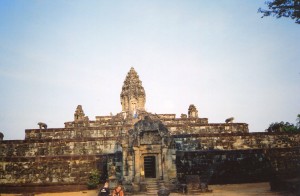
King Indravarman spearheaded a construction program that became the main prototype for all later kings. Jayavarman II had laid the political and spiritual foundations for the Khmer empire (see What Wat? How Was Angkor Wat Created?, but Indravarman built things that we can still gawk at today. He created much of the Khmer empire’s wow factor.
In this post, we’ll explore one of the first great Khmer buildings, the Bakong. It’s a key predecessor of Angkor Wat. [click to continue…]
by bria4123 on December 23, 2011
In What Wat? How Was Angkor Wat Created? we saw that several things converged in the 9th century to make Angkor the base of a great civilization that would last more than 600 years. One more key ingredient was a great man called Jayavarman II.
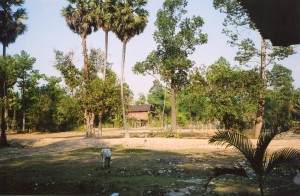
Like Egypt’s King Sneferu, Jayavarman was an early ruler who did things his people never saw before (you can see The Road to Perfection in Ancient Egypt). Both men’s deeds became intellectual horizons throughout their cultures’ histories. [click to continue…]
by bria4123 on December 23, 2011
We left the Khmers at their graceful old Chenla capital of Ishanapura (Roots of Angkor Wat, Part Two), but their kings took some massive steps between the handsome Chenla temples and Angkor’s epic constructions.
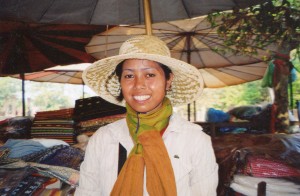
Key events happened around 800 that created one of the world’s great cultures. If Westerners had traveled this far east, their jaws would have smacked the ground. [click to continue…]
by bria4123 on December 22, 2011
Ideas of geography in ancient India kept getting bigger and bigger. Most ancient cultures imagined a cosmic mountain, that’s either the home of the gods, or the center of the universe.
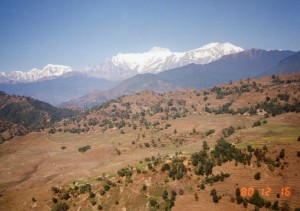
Greeks imagined the center of the world at Delphi, and their cities built so many shrines there that it became one of their most important political centers.
Greeks also envisioned Mount Olympus–the place where Zeus and the other 11 gods feasted and fought in their hall.
The Chinese imagined Tai Shan as the site where the emperor renewed harmony between Heaven and Earth.
Israel’s Ten Commandments were given on Mount Sinai, a key meeting place between Yahweh and His chosen people.
Egypt didn’t have mountains, so its people imagined one–the primal mound that emerged from water, which all creation took place on.
But Indian mountains were very different. [click to continue…]
by bria4123 on December 18, 2011
Ancient Egypt’s King Sneferu already began the two largest buildings the world had seen so far, but his best was yet to come.
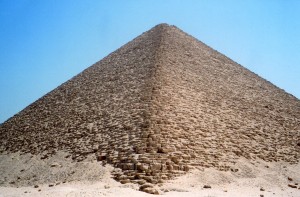
The Red Pyramid at Dahshur was the first true pyramid, with straight edges. It was also the last step on the road to the Great Pyramid at Giza. The Red Pyramid is one of the most under-appreciated buildings in the world.
You can read about the steps that Sneferu took before building it at The Road to Perfection in Ancient Egypt; The Bent Pyramid at Dahshur, or you can start climbing right here. [click to continue…]
by bria4123 on December 17, 2011
The road from Djoser’s step pyramid at Saqqara to Khufu’s Great Pyramid at Giza is one of the greatest stories in cultural history. Within 100 years of the former, the greatest pyramid ever was built. It proudly rises with straight edges, rather than steps, at a 52 degree angle, and it soars to about 2 1/2 times the height of Djoser’s pyramid. How did this progression happen so quickly so long ago?
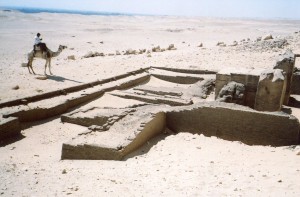
King Sneferu is the main link. He’s been called the greatest pyramid builder because his constructions add up to more mass in stone than the Great Pyramid at Giza. Yet he’s little known.
Energize your Ka! We’re about to explore his work. [click to continue…]
by bria4123 on December 16, 2011
One of the reasons why Thailand has one of the most fascinating cultures in the world is its regional variety.
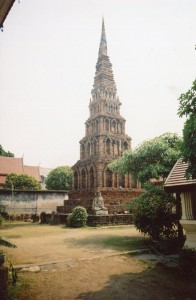
We saw some of the enchantments of northern Thai art earlier today. The town of Lamphun was the center of a very special kingdom. [click to continue…]
by bria4123 on December 16, 2011
Thais consider fun to be a basic value. They call fun sanuk, and an activity has to be fun.

Near Chiang Mai, a taxi driver asked, “Are you married?” [click to continue…]
by bria4123 on December 15, 2011
From point to line to plane. The West has taken these three basic Euclidean ideas for granted as reality.
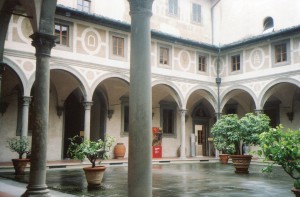
Architects in Florence in the 15th century reinforced these assumptions by putting the most perfect expressions of lines and shapes into architecture. They did this as Florentine painters were developing three-dimensional perspective. Western assumptions that static and linear geometric shapes are basic reality emerged in many dimensions.
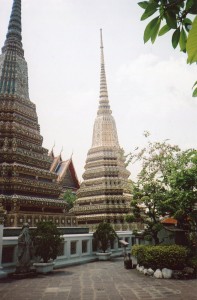
But in Thailand at the same time, different concepts of geometry became dominant ideas that society organized its thought around. Come and explore a different view of reality with me. [click to continue…]
by bria4123 on December 15, 2011
My favorite regional variety of Thai art is from the north. After the Thais threw off the Khmer yoke in the 13th century, a great king called Mangrai established a state called Lanna.
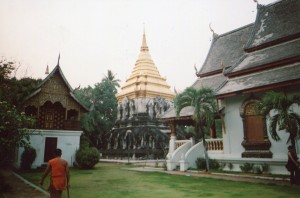
This kingdom reached its heyday in the 15th century. Its geography helped make it special. It’s mountainous. Four riverine valleys run from north to south, and they’re separated by steep hills. Lanna was thus not like the flat plains that Angkor dominated. You can’t impose a single cult on diverse mountain people too rigidly. So, many regional artistic varieties emerged. All are human-scale. They comprise one of the world’s most pleasant cultural landscapes. [click to continue…]











